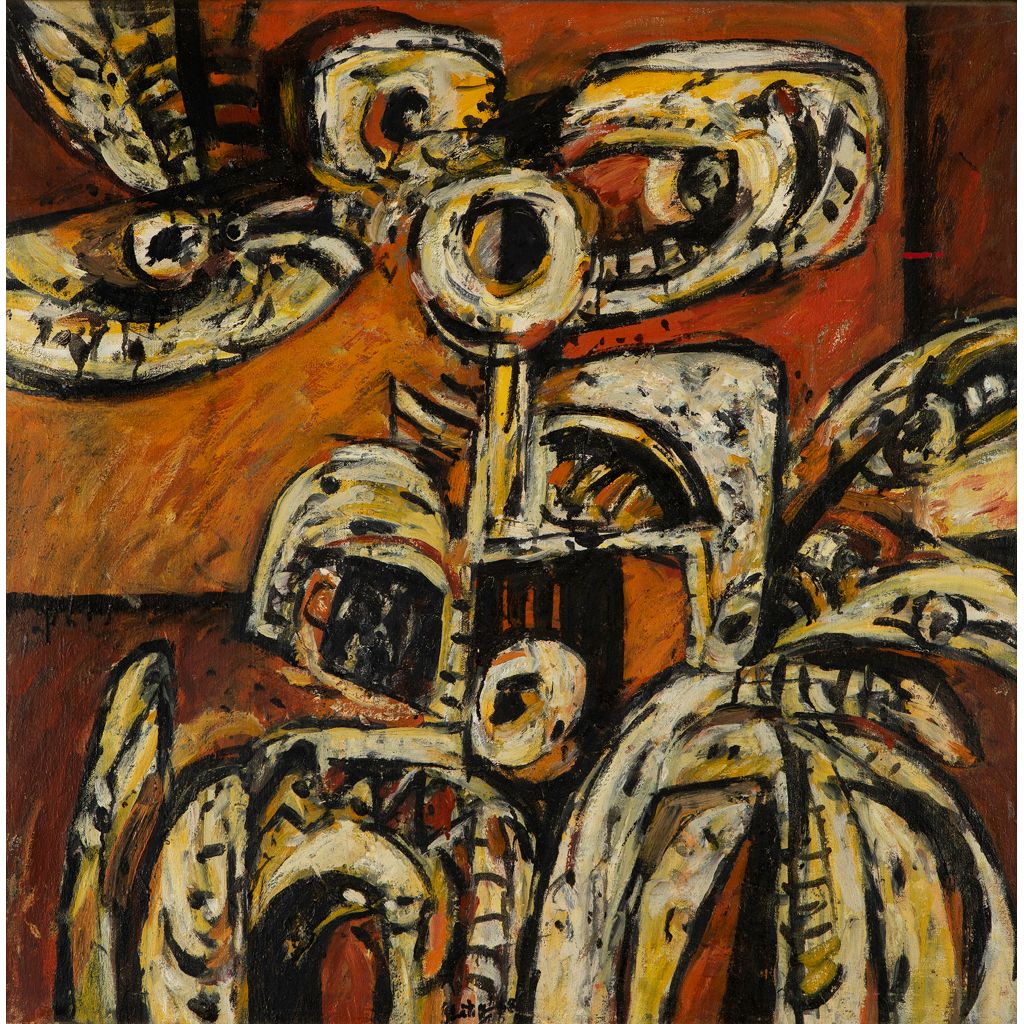New World Auction Record Set
On 27 March at our inaugural MODERN MADE auction in London, Abdul Latiff Mohidin's Growth I, 1968 achieved a World Auction Record selling for £245,000 including premium after spirited bidding in the room.

5 March 2019
Lyon & Turnbull
On 27 March at our inaugural MODERN MADE auction in London, Abdul Latiff Mohidin's Growth I, 1968 achieved a World Auction Record selling for £245,000 including premium after spirited bidding in the room.
"[Latiff Mohidin] is arguably one of the few artists in this region who has turned to the natural and cultural domains in the region as resources for his art, and in the process has developed an iconography which is new, and not merely a feeble revival or renovation of existing, decaying or dead traditions. In this connection, the Pago-Pago series can be claimed to have a significant status in the contemporary art of this region..." - T.K. Sabapathy, Art Historian, Curator and Critic
In 2016 an ambitious project was launched by the National Gallery of Singapore, Reframing Modernism: Painting from Southeast Asia, Europe and Beyond, with the aim of advocating South East Asian art on a global stage. This paid off when Abdul Latiff Mohidin, often considered Malaysia’s leading modernist painter and poet, became the focus of an exhibition held at the Centre Pompidou, Paris in Spring 2018, a rare accolade for a Southeast Asian artist.
The focal point of the exhibition was Latiff Mohidin’s Pago Pago series, created between 1960 and 1969, which won him his first wave of international fame as a significant modern artist. Eugene Tan, Director of the National Gallery of Singapore explained “The exhibition showcased Latiff Mohidin’s art during the 1960s, which was a decade that marked such significant shifts both in Southeast Asia and Europe. Latiff Mohidin is not only on the Southeast Asia’s leading artists, it could be said that he is one of the first artists of the region to imagine ‘Southeast Asia’ as a distinct aesthetic realm.”

Searing with energy Abdul Latiff Mohidin’s Growth I (1968) is a commanding example of the artist’s work from the landmark Pago Pago period as he journeyed across Europe and Southeast Asia. A real metaphor of cross-culturalism, “Pago Pago”, derived from an amalgam of the word ‘pagoda’ and ‘pagar’, the wooden beams from old Malay houses, evoked a consciousness that emerged through his travel. It was inspired by the artist’s study of tribal arts of the Oceanic region in a German museum whilst an art student, which he applied to his imaginings of the Southeast Asia region – an internal and external navigation of the artist’s worlds – seeking to offer a different way of thinking challenging the dominance of Western Modernism in the 1960s.
Earlier stages of the Pago Pago series had focussed on a more formal architectonic rigour, but during the closing years of 1960s the theme underwent radical transformation and the present picture marks one of the latter stages in the artist’s evolution in abstract art during the period. In Growth I, the series is expanded to include landscape elements, leaning towards a more fluid and organic dynamism with forceful bold black lines against blatant earth colours of reds and yellows, referencing the tropical landscape and in it he is trying to make visible the mysterious forces and presence of nature.
In a newspaper article written on the artist in the year of this paintings creation it noted:
“Abdul Latiff’s main interest is in forms or shapes...these forms have a character and weight to them that outride his indecisive lines, His inspiration is from nature and he believes that everything we see and experience affect what we create so that there is no real need to plan a painting in minute detail before rendering it.” - (The Bangkok Post, 8 September 1968)
Growth I is also significant as a transitional work where he is beginning to challenge the ascending vertical thrust of his previous works. In this work the vertical dominance is more muted and he gives more significance to the horizontal axis which would become a dominant theme in the last works of the Pago Pago series. The rarity of this late work in this formative series cannot be denied, especially when taking into consideration that from the early 1970s Latiff Mohidin forwent painting for a number of years to focus on his literary practice. It would be a number of years later until he embarked on his next artistic practice, the Gelombang series.